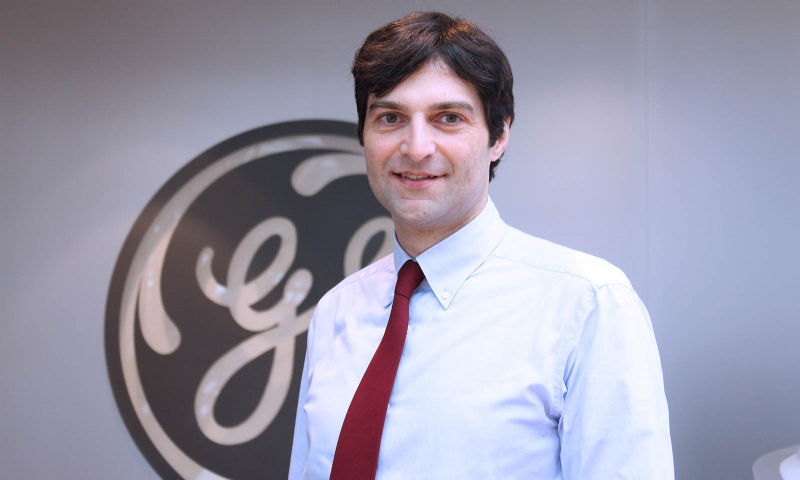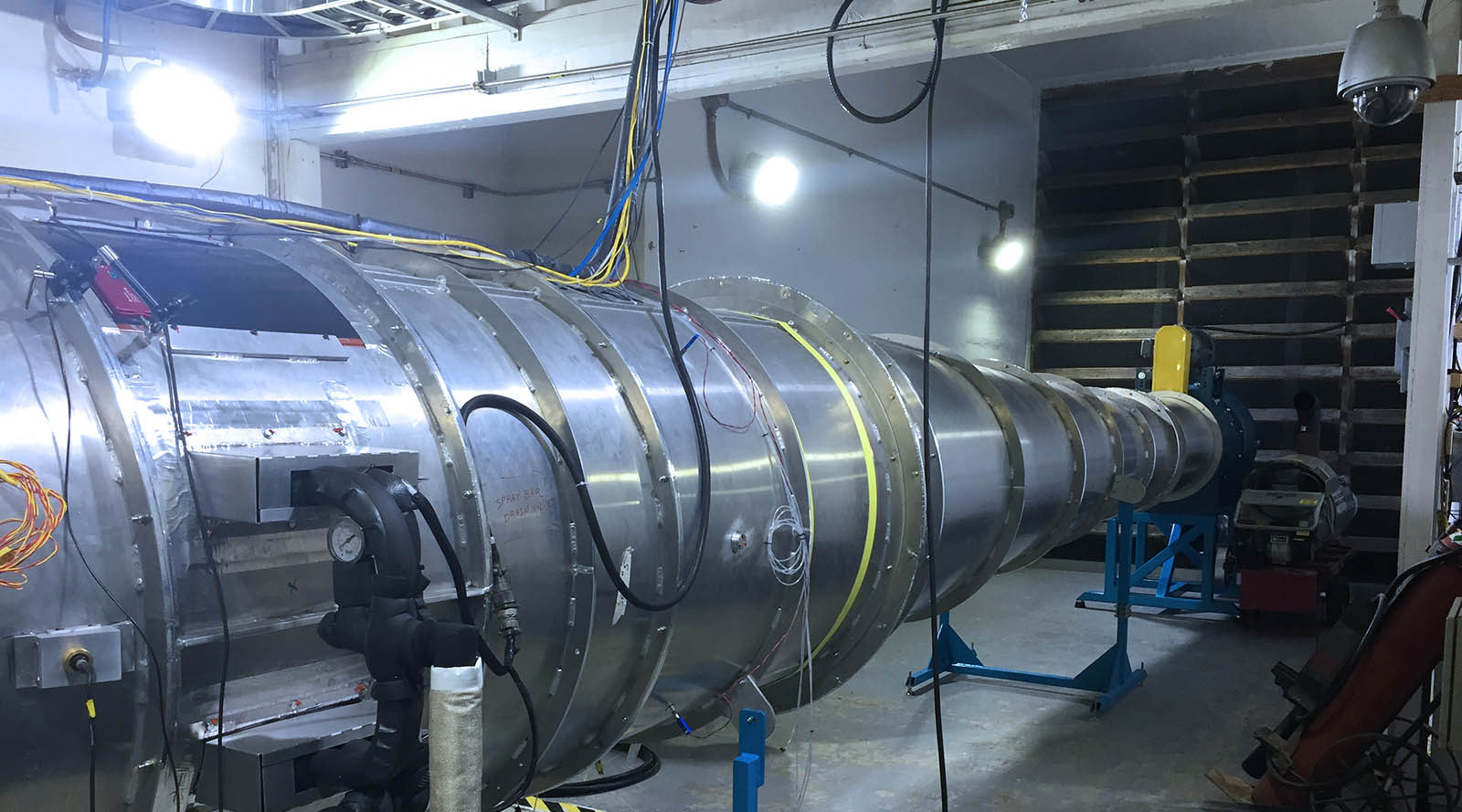Invent
Ice Ice... Sailing
The Catalyst engine passed the icing test campaign too amidst glacial temperatures, thanks to a team of experienced engineers and their meteorological and even racing skills.
Mar 2021
The experience of sailing between the islands of the Gulf of Naples or the spectacular Cyclades in the Aegean have proven valuable in an environment that is the “polar” opposite. Canada, for example, during the test campaign run under extreme cold conditions that the new Catalyst engine faced in order to prove its operational capabilities and performance.
“Overall, it took us four and a half years, if you consider preparation, planning, definition and final execution of the tests. For the first time in 2017, we reached the Gas Turbine Research Facilities at the National Research Council (NRC) in Ottawa, where the test facility is located."
Paolo Vanacore is Senior Engineer Inclement Weather at GE Aviation in Munich and he is also an expert sailor: “during my first job interview, at the beginning of my career in aviation, they asked me about meteorology and I answered according to my sailor’s skills... so they assigned me to inclement weather (a key section in aviation engineering, ed.)."
After his first eight years in England grappling with engines for medium- and long-range aircraft, Vanacore - a Neapolitan who graduated as a mechanical engineer from the University of Naples Federico II and has a PhD from the von Karman Institute - joined GE in 2015 to deal with these disciplines on the LEAP program. Shortly thereafter - when GE's new turboprop was just born from a clean-sheet after almost 50 years since a new engine of the same type entered the market - he dedicated himself to ice testing for the Catalyst program.
"We tested Catalyst in Ottawa for two consecutive winters, in 2019 and 2020. It lasted about two months on a full-time basis, usually during the colder months of January and February," explains Vanacore, who is leading the inclement weather certification as part of the European Catalyst team of professionals - which includes Avio Aero in Italy, GE Aviation Czech, the Engineering Design Center in Poland and GE Aviation Advanced Technology in Germany - who have followed the Catalyst through every aspect of design and production from the beginning. And, given the importance of the campaign, he also counted on the analytical-numerical support of the teams at GEIQ Mexico and the GE Engineering Centre in Bangalore.
“During the two years preceding the start of the icing test, we prepared and defined the extensive protocol called CPA (Icing Critical Point Analysis) and also worked on other inclement weather tests and analyses: rain, hailstorm, snow, ice crystals and mixed conditions, like freezing rain, freezing drizzle, and ice slab ingestion." Vanacore says, citing the document from the aviation authorities, FAA and EASA, that provides guidelines and parameters for testing the engine at any speed (from minimum descent flight idle, to max continuous and max take off power, as well as all cruise power levels and ground operations).
These were, in a way, unprecedented tests for a turboprop. CPA has not been used on a clean-sheet general aviation engine for several decades. After that very first trip to Canada in 2017 - when Vanacore and his European colleagues prepared and inspected the test room and set up the systems to capture millions of data points that would have been collected during the tests - Vanacore found himself back at the NRC in Ottawa in January 2020 when the Catalyst had been installed on the test bed.
During the preparation, we worked on several inclement weather tests and analyses: rain, hailstorm, snow, ice crystals and mixed conditions, like freezing rain, freezing drizzle, and ice slab ingestion
But with the pandemic outbreak, the team was required to head back to Europe in early March, and the engineers had to reorganize their work amid an unprecedented global crisis. "We didn’t lose heart. Although we could not get to Canada, we coordinated with the NRC team there. We also benefited from the support of two test engineers in Evendale (who were much closer)," says Vanacore.
"The second phase of testing resumed last January, thanks in part to our Steve Erickson from Prague and Kwadwo Owusu from GE's test center in Winnipeg who joined the local teams to continue and finish the campaign in early March. We were even able to follow the activities real-time thanks to cameras both outside and inside the engine. Eight non-intrusive micro-cameras monitored the engine components to achieve the main objective of the tests, which was to verify that ice accretion or even shedding did not damage the mechanics or threaten the operation and performance. Such clear, direct communication has been key also for the Organization Designation Authorization delegated engineer, who was able to remotely track and oversee compliance on behalf of the FAA."
The icing test aims to certify that the engine is working correctly according to parameters and levels that verify the integrity of each individual fixed or rotating part, the rotation speed, the power, the pressure and the temperature. The sensors and detection instruments installed around and inside the engine, with the help of video, allow the " health" and the response of the engine to be monitored at every instance of the test.
The Ottawa test room at the NRC is connected to the outside environment through a wind tunnel about 10 meters long. From here, the freezing Canadian winter air is drawn in and mixed with supercooled liquid droplets sprayed throughout the tunnel. Thus, atmospheric conditions and in-flight temperatures are generated and conveyed to the engine in the form of clouds consisting of small drops at sub-zero temperatures.
"The droplets in these uniform clouds range in size from about 15 microns to a few millimeters, and temperatures range from -20 to 0 degrees Celsius, simulating the variability of altitude, from ground level up to about 30 thousand feet (9 Km)," explains Vanacore. "When they fall below -20 °C, reaching -40 °C for example, ice crystals begin to form in the clouds. Especially at high altitudes, at certain speeds, they become like stones. We conducted tests that led these clouds to flow against the engine following extended vertical or horizontal trajectories, simulating flight maneuvers with variable density and consistency depending on the temperatures but also on the speed or angle of impact."
That environment may sound daunting, but it’s the reality of what happens when we are in the air. The good news is that passenger often don’t notice those harsh elements thanks to such robust engine and airframe testing. “Airborne droplets may remain liquid in nature. But, as soon as an airplane flies through the cloud, they immediately freeze on the impact with cold metal surfaces, such as the fuselage, propeller blades, engine compressor inlet components - unless those parts are sufficiently ice-resistant” Vanacore continued.
The engine's responses have exceeded expectations, as well as its anti-ice system, demonstrating a high level of reliability, even under such extreme weather conditions where an aircraft in service is rarely found
During hundreds of test hours, data are analyzed and stored, helping to prove and optimize the capability and reliability of the materials as well as the design. Ultimately, all the testing contributes to higher safety. The results were excellent," says Vanacore. “We even simulated the restart after long inactivity at polar temperatures. The engine's responses have exceeded expectations, as well as its anti-ice system (designed to maximize anti-icing capability with minimum energy extraction from the engine), demonstrating a high level of reliability, even under such extreme weather conditions where an aircraft in service is rarely found."
According to Vanacore, this experience is a best practice due to the multidisciplinary nature of the analyses and tests. And it was a challenge within a climatic challenge. To be successful, it was necessary to plan (and adapt) according to the local weather conditions allowing the right amount and temperature of air to be conveyed into the tunnel for each specific test.
"It was a bit like seeking the wind while sailing at sea with your crew... Well, here a team of 20 aviation professionals were seeking the cold and ice, of course. But the level of competition, and above all cohesion, during this long and cold race rewarded us with a great success!"
Photos of the test cell in page are courtesy of the National Research Council (NRC) of Ottawa, Canada; cover image credits Radek Novotny - GE Aviation.








